Mate Toth
Variational Signal Separation for Automotive Radar Interference Mitigation
May 23, 2024Abstract:Algorithms for joint mutual interference mitigation and object parameter estimation are a key enabler for automotive applications of frequency-modulated continuous wave (FMCW) radar. The underlying signal model poses a challenge for signal separation, since both the coherent radar echo and the non-coherent interference influenced by individual multipath propagation channels must be considered. In particular, under certain assumptions, the model is described as a superposition of multipath channels weighted by parametric chirp envelopes in the case of interference. In this paper, we introduce a method inspired by sparse Bayesian learning (SBL) to detect and estimate radar object parameters while also estimating and successively canceling the interference signal. An augmented probabilistic model is employed that uses hierarchical Gamma-Gaussian prior model for each multipath channel separately. Based on this model an iterative inference algorithm is derived using the variational expectation-maximization (EM) methodology. The algorithm is statistically evaluated in terms of object parameter estimation accuracy and robustness, indicating that it is fundamentally capable of achieving the Cramer-Rao lower bound (CRLB) with respect to the accuracy of object estimates and it closely follows the radar performance achieved when no interference is present.
End-to-End Training of Neural Networks for Automotive Radar Interference Mitigation
Dec 15, 2023Abstract:In this paper we propose a new method for training neural networks (NNs) for frequency modulated continuous wave (FMCW) radar mutual interference mitigation. Instead of training NNs to regress from interfered to clean radar signals as in previous work, we train NNs directly on object detection maps. We do so by performing a continuous relaxation of the cell-averaging constant false alarm rate (CA-CFAR) peak detector, which is a well-established algorithm for object detection using radar. With this new training objective we are able to increase object detection performance by a large margin. Furthermore, we introduce separable convolution kernels to strongly reduce the number of parameters and computational complexity of convolutional NN architectures for radar applications. We validate our contributions with experiments on real-world measurement data and compare them against signal processing interference mitigation methods.
Resource-efficient Deep Neural Networks for Automotive Radar Interference Mitigation
Jan 25, 2022
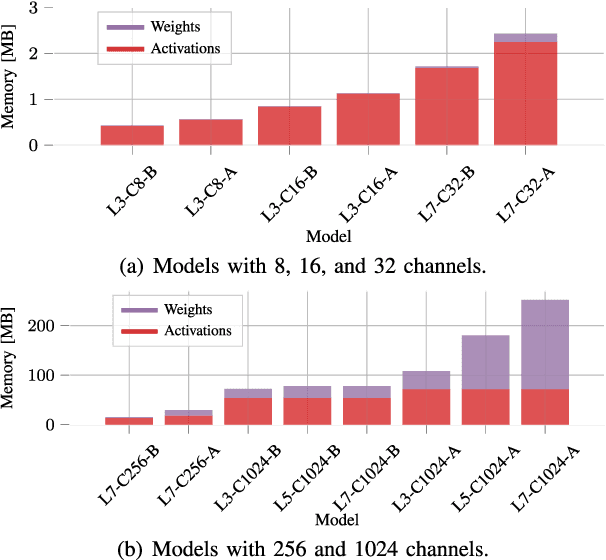
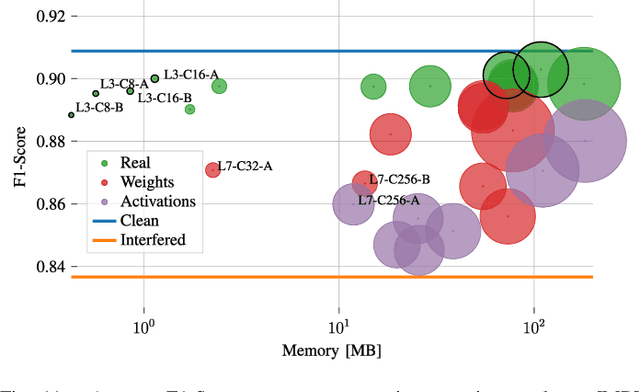
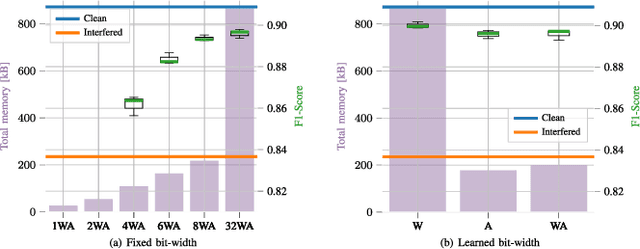
Abstract:Radar sensors are crucial for environment perception of driver assistance systems as well as autonomous vehicles. With a rising number of radar sensors and the so far unregulated automotive radar frequency band, mutual interference is inevitable and must be dealt with. Algorithms and models operating on radar data are required to run the early processing steps on specialized radar sensor hardware. This specialized hardware typically has strict resource-constraints, i.e. a low memory capacity and low computational power. Convolutional Neural Network (CNN)-based approaches for denoising and interference mitigation yield promising results for radar processing in terms of performance. Regarding resource-constraints, however, CNNs typically exceed the hardware's capacities by far. In this paper we investigate quantization techniques for CNN-based denoising and interference mitigation of radar signals. We analyze the quantization of (i) weights and (ii) activations of different CNN-based model architectures. This quantization results in reduced memory requirements for model storage and during inference. We compare models with fixed and learned bit-widths and contrast two different methodologies for training quantized CNNs, i.e. the straight-through gradient estimator and training distributions over discrete weights. We illustrate the importance of structurally small real-valued base models for quantization and show that learned bit-widths yield the smallest models. We achieve a memory reduction of around 80\% compared to the real-valued baseline. Due to practical reasons, however, we recommend the use of 8 bits for weights and activations, which results in models that require only 0.2 megabytes of memory.
* 15 pages; published in IEEE Journal of Selected Topics in Signal Processing, Special Issue on Recent Advances in Automotive Radar Signal Processing, Volume: 15, Issue: 4, June 2021. arXiv admin note: text overlap with arXiv:2011.12706
Complex-valued Convolutional Neural Networks for Enhanced Radar Signal Denoising and Interference Mitigation
Apr 29, 2021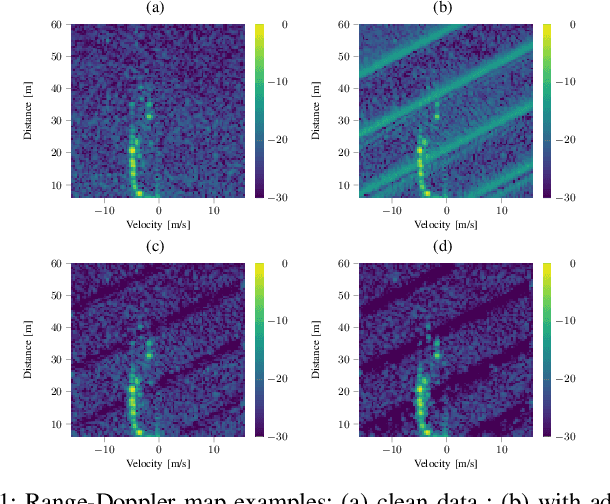
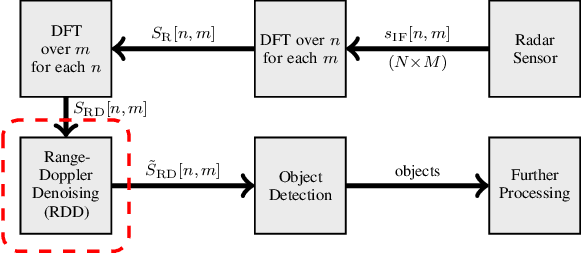
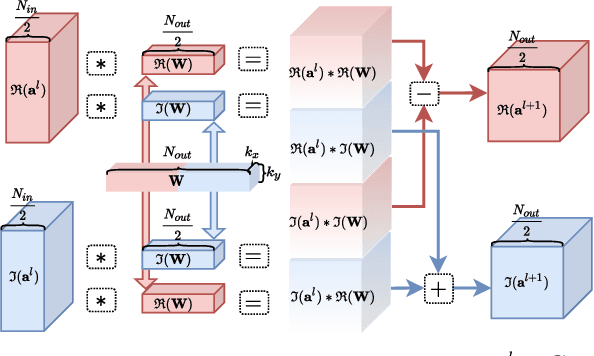
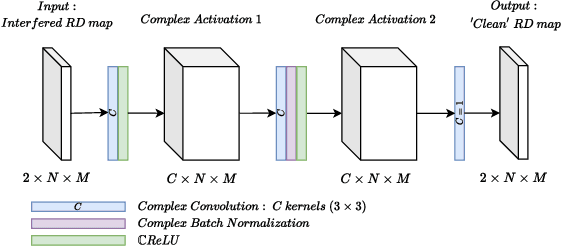
Abstract:Autonomous driving highly depends on capable sensors to perceive the environment and to deliver reliable information to the vehicles' control systems. To increase its robustness, a diversified set of sensors is used, including radar sensors. Radar is a vital contribution of sensory information, providing high resolution range as well as velocity measurements. The increased use of radar sensors in road traffic introduces new challenges. As the so far unregulated frequency band becomes increasingly crowded, radar sensors suffer from mutual interference between multiple radar sensors. This interference must be mitigated in order to ensure a high and consistent detection sensitivity. In this paper, we propose the use of Complex-Valued Convolutional Neural Networks (CVCNNs) to address the issue of mutual interference between radar sensors. We extend previously developed methods to the complex domain in order to process radar data according to its physical characteristics. This not only increases data efficiency, but also improves the conservation of phase information during filtering, which is crucial for further processing, such as angle estimation. Our experiments show, that the use of CVCNNs increases data efficiency, speeds up network training and substantially improves the conservation of phase information during interference removal.
Deep Interference Mitigation and Denoising of Real-World FMCW Radar Signals
Dec 04, 2020



Abstract:Radar sensors are crucial for environment perception of driver assistance systems as well as autonomous cars. Key performance factors are a fine range resolution and the possibility to directly measure velocity. With a rising number of radar sensors and the so far unregulated automotive radar frequency band, mutual interference is inevitable and must be dealt with. Sensors must be capable of detecting, or even mitigating the harmful effects of interference, which include a decreased detection sensitivity. In this paper, we evaluate a Convolutional Neural Network (CNN)-based approach for interference mitigation on real-world radar measurements. We combine real measurements with simulated interference in order to create input-output data suitable for training the model. We analyze the performance to model complexity relation on simulated and measurement data, based on an extensive parameter search. Further, a finite sample size performance comparison shows the effectiveness of the model trained on either simulated or real data as well as for transfer learning. A comparative performance analysis with the state of the art emphasizes the potential of CNN-based models for interference mitigation and denoising of real-world measurements, also considering resource constraints of the hardware.
Complex Signal Denoising and Interference Mitigation for Automotive Radar Using Convolutional Neural Networks
Jun 25, 2019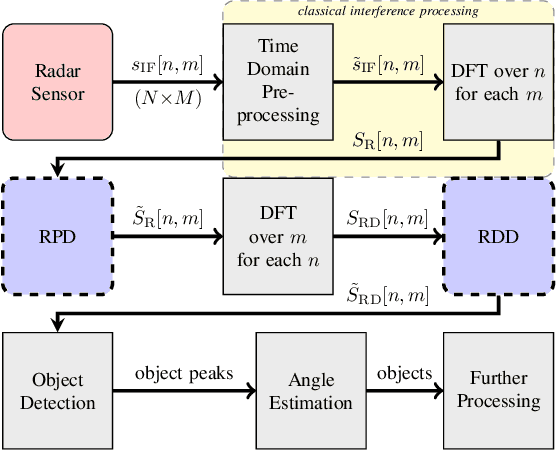
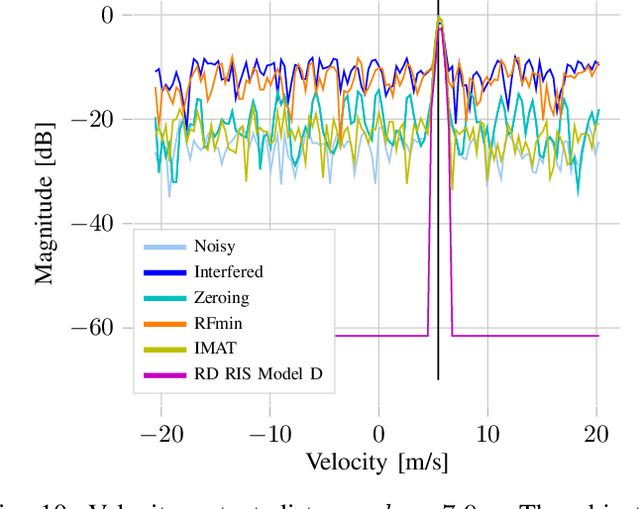

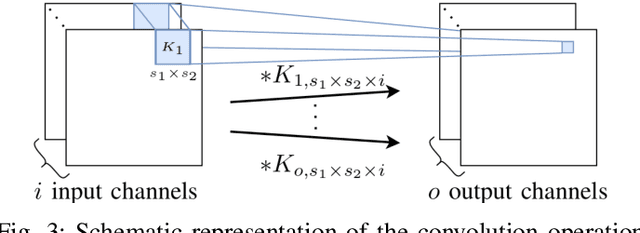
Abstract:Driver assistance systems as well as autonomous cars have to rely on sensors to perceive their environment. A heterogeneous set of sensors is used to perform this task robustly. Among them, radar sensors are indispensable because of their range resolution and the possibility to directly measure velocity. Since more and more radar sensors are deployed on the streets, mutual interference must be dealt with. In the so far unregulated automotive radar frequency band, a sensor must be capable of detecting, or even mitigating the harmful effects of interference, which include a decreased detection sensitivity. In this paper, we address this issue with Convolutional Neural Networks (CNNs), which are state-of-the-art machine learning tools. We show that the ability of CNNs to find structured information in data while preserving local information enables superior denoising performance. To achieve this, CNN parameters are found using training with simulated data and integrated into the automotive radar signal processing chain. The presented method is compared with the state of the art, highlighting its promising performance. Hence, CNNs can be employed for interference mitigation as an alternative to conventional signal processing methods. Code and pre-trained models are available at https://github.com/johanna-rock/imRICnn.
 Add to Chrome
Add to Chrome Add to Firefox
Add to Firefox Add to Edge
Add to Edge